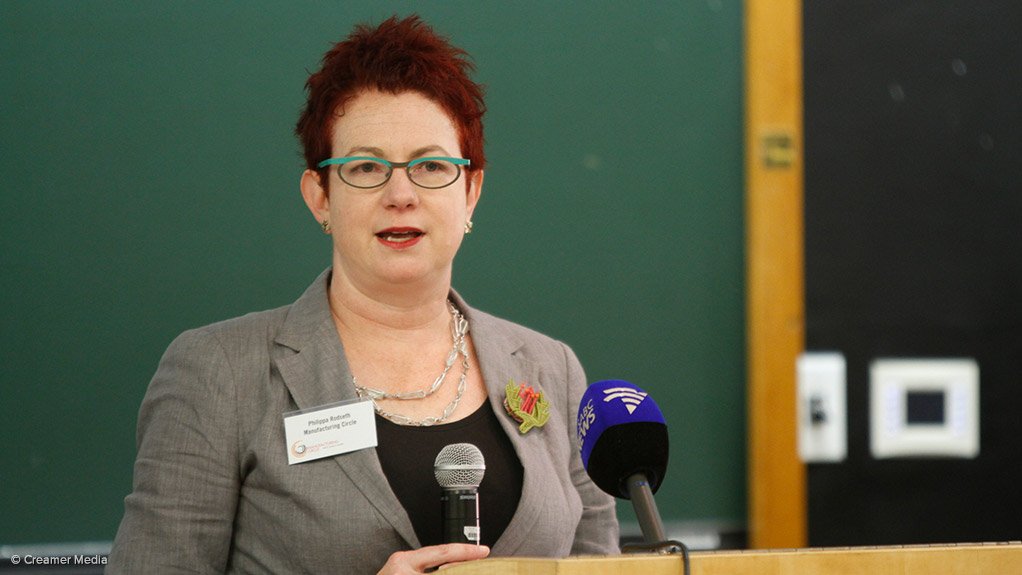Within the framework of the Steel Master Plan (SMP), industry body Manufacturing Circle is taking an active role in driving demand-side manufacturing opportunities.
The SMP is a strategic roadmap designed to propel the steel industry forward, with its core objective to create a competitive, dynamic and inclusive sector that provides a stable platform for investment, growth, and job creation.
Six focus areas for implementation were identified with working groups, comprising industry, labour and government representatives. These focus areas are namely the supply-side, demand-side, export markets, resource mobilisation, transformation and human resource development.
To stimulate the implementation of demand-side opportunities, efforts will be made to drive their visibility and prioritisation, Manufacturing Circle executive director Philippa Rodseth says, adding that the body “brings an industry perspective to this process”.
She says that South Africa’s steel value chain is “complex” and that it comprises upstream and downstream representatives, importers and exporters.
The Manufacturing Circle, therefore, works to understand and address opportunities and challenges at an industry level for the overall benefit of the sector.
This is achieved through working collaboratively with industry organisations such as the Power Operations and Leadership Association of Southern Africa, the South African Iron and Steel Institute, the Steel and Engineering Industries Federation of Southern Africa, and Business Unity South Africa’s localisation project manager.
Government representation within the implementation team comprises parties from the Department of Trade, Industry and Competition (DTIC) and the Industrial Development Corporation who, in turn, drive engagement with other government departments and State-owned enterprises (SOEs).
In furthering demand-side manufacturing opportunities, the Manufacturing Circle focuses on both local and export markets. In the local market, the emphasis is on facilitating opportunities for industry participation in projects initiated by SOEs.
“The Manufacturing Circle motivates for better coordination and engagement with the State, to enable participation by local industry in procurement processes,” Rodseth says.
The local demand workstream’s focus areas, to identify opportunities for industry, include Eskom’s transmission line build programme, renewable-energy build projects, the Welisizwe Rural Bridges Programme, mining equipment and consumables, as well as rail, including tracks (perway), overhead transmission equipment and rolling stock. Local procurement opportunities in the private sector are currently focusing on mining equipment and consumables, and opportunities for stainless steel.
“For each area, we focus on understanding local industry capabilities and understanding capacity and competitiveness, which, in turn, is linked to visibility of anticipated demand.”
In export markets, the Manufacturing Circle is involved in identifying pilot projects within the African continent, targeting specific countries and subsectors, namely energy, transportation, oil and gas, and water.
“We are assessing these projects according to opportunities for steel products and components, and how opportunities can be enabled through funding and contracting structures. Also, the way in which marketing from an SA Inc perspective can be facilitated is an important part of the exercise,” Rodseth notes, stressing that the aim is to leverage these projects to promote procurement from the local steel sector.
She notes that competitiveness is being enabled through the establishment of specific industry-led funding initiatives to facilitate downstream industry production and exports, as well as driving skills development, all of which are being addressed within specific workstreams.
In addition, the Local Content and Compliance Unit is a further initiative established to tackle issues related to illicit trade, advocating for the consideration of locally manufactured, technically compliant products to government departments and SOEs.
However, challenges remain, relating to coordination, alignment and information sharing within the implementation team – which includes participants from industry and government.
The Manufacturing Circle’s approach, based on sound project management principles, is to facilitate an effective way of working that can aid in alleviating these challenges, Rodseth says.
“Effective implementation of the SMP’s focus areas aims to contribute to integrating local manufacturing into international supply chains, fostering technology transfer and skills development, and the Manufacturing Circle is applying its efforts so that industry can capitalise on local and export market opportunities,” Rodseth states.
“The Manufacturing Circle advocates for an SA-Inc approach where State procurement poses a window of opportunity for reindustrialisation. We need sustainable, predictable demand to saturate local industrial capacity and enhance economies of scale. Economics inform capacity,” Rodseth notes.
Consequently, the Manufacturing Circle is advocating for better visibility of State procurement requirements in the domestic market to better enable industry capacity planning.
From an export perspective, Rodseth concludes that working together in a more coordinated and aligned way will enable offerings on a competitive basis.
Edited by: Nadine James
Features Deputy Editor
EMAIL THIS ARTICLE SAVE THIS ARTICLE
ARTICLE ENQUIRY
To subscribe email subscriptions@creamermedia.co.za or click here
To advertise email advertising@creamermedia.co.za or click here













